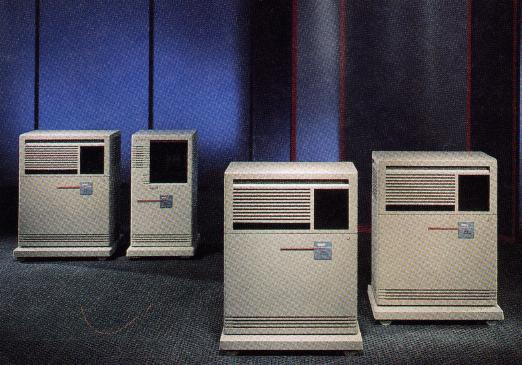
The DEC Microvax Minicomputer System
Minicomputers were developed in the 1960s for doing specialized tasks. They were smaller, less powerful, and less expensive than the large computers available at the time. As they became increasingly sophisticated, their capabilities, memory size, and overall performance have overlapped those of mainframes. The more powerful mini-computers are called superminis.
Minicomputers are easier to install and operate than mainframe computers. They take up less floor space than mainframes; they may fit on a desk or they may be as large as a file cabinet (see Figure below).

They require few special environmental conditions.
Minicomputers can be plugged into standard electrical outlets and
often do not require facilities such as air conditioning and special
platforms. Prices for minicomputers range from a few thousand dollars
to two or three hundred thousand dollars.
Minicomputers are used for multiuser applications, numerical control of machine tools, industrial automation, and word processing. They are also used in conjunction with communication facilities for sharing data and peripherals or serving a geograph-ically dispersed organization. Like microcomputers, they also can use packaged software.
A minicomputer system can easily be enlarged to meet the needs of a growing organization since it can be implemented in a modular fashion. For example, a hospital may install one minicomputer in its out-patient department for record keeping and another in the pharmacy or laboratory. As additional minicomputers are installed, they can be connected to existing ones to share common data.
In the late 1970s and early 1980s, the minicomputer industry grew at a rate of 35 to 40 percent annually. Today, the market for minicomputers is weakening. The in-creased capabilities and improved software of microcomputers has led to the increased use of micros in traditional minicomputer markets. Many companies now link microcomputers with mainframes or existing minicomputers to hold down equipment investment costs and still meet processing needs. This practice, however, creates new security problems for many corporations.
Manufacturers of minicomputers include Digital Equipment Corporation (DEC), Hewlett-Packard, Data General, Honeywell, General Automation, Unisys, Texas Instruments, Wang Laboratories, Prime Computer Inc., and IBM.